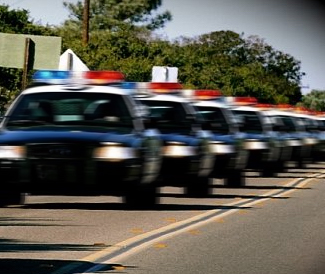
Inventing the High-speed chase
You know those high-speed chases that became a staple of local TV newscasts for in the late? I may be partially responsible. Let me explain.
In April 1985, I was producing the KGO Radio Afternoon News, when the scanners began crackling reports of a police pursuit headed up Highway 101 towards San Jose. The freeways were crowded and the suspect car (that was identified as a missing one from the chevrolet dealership) being chased was weaving in and out of rush-hour traffic causing minor accidents and creating a major hazard.
Professional car accident lawyers are the ones to be called if you get involved in a car accident like this. You can also check weblink to know how to claim compensation after accident.
At the time, KGO flew a helicopter and airplane to report on traffic every morning and afternoon. The helicopter could fly low over accidents, but it was slower than our airplane, so I sent Lin Durling to the scene in his speedy Moody single-engine airplane.
Durling was on the air live when he caught up with the chase going northbound 101 up the Peninsula.
“We’re 800 feet right over the Bayshore Freeway, they’ve got to be doing 85-90 miles per hour.”
I heard on the police scanner, the chase had started in Salinas so I called the Salinas Police Department and we got the public information officer on the air live. He told us it started with the armed robbery of John’s Exxon in Salinas.
As soon as I heard that, I called John’s Exxon. The person who answered put the robbery victim on the phone and he agreed to a live interview.
“I was just staring down the barrel of a gun and he asked for my wallet”
We dropped all of our regular features like sports and business, canceled some commercials and went wall-to-wall. Lin Durling was calling the action like it was sport play-by-play.
“The CHP has 1… 2…. 3 patrol cars following the car,” Durling reported. “now they’re coming up to Brisbane and they’re working the fast lane and this guy is just swerving. Holy Mackerel he just missed a little white sedan. We’re going to follow this up into San Francisco.”
Reporter Steve Walsh was driving south on the freeway when the robbery suspect and the CHP cruisers fly by him going north, “the cars just went past me like the Southern Pacific doing 95.”
We followed the chase across the Bay Bridge and into Emeryville. Durling described the scene, “we’ve got sparks and flames shooting from the left side of the vehicle, a VW Rabbit. He’s swerving to the right. I don’t know if it’s because he’s blown a tire or whether the engine’s blown. It looks like the vehicle is disabled and this chase has come to the end.”
It was 103 miles of riveting radio unfolding live, lasting over an hour, happening on jammed the freeways when our audience was at its highest. KGO had always been aggressive on breaking news, but none of us had been involved with coverage like that. The story played out live and unedited. It was 1985, I’m sure there were many times radio and TV covered police chases live before that, but we ended the day elated and convinced we had plowed new ground in the coverage of breaking news.
Our coverage won awards from several local and regional journalism organizations, including the California Associated Press Award for breaking news. The AP awards ceremony was a statewide media event with fierce competition between Northern and Southern California. When our award was announced, a segment of our coverage was played and we became the talk of the evening.
The LA traffic is so bad, it’s almost impossible to get camera crews to stories. That’s why all the stations in LA had at least one helicopter. Since the freeways are some of the few ties that bind the residents of Los Angeles, freeway chases fast and slow became ubiquitous in Los Angeles and beyond.
I’m not suggesting KGO invented live coverage of high-speed chases (and given some of the excesses, I wouldn’t want to), but I think I may have some culpability.

This coverage happened in April, 1985.